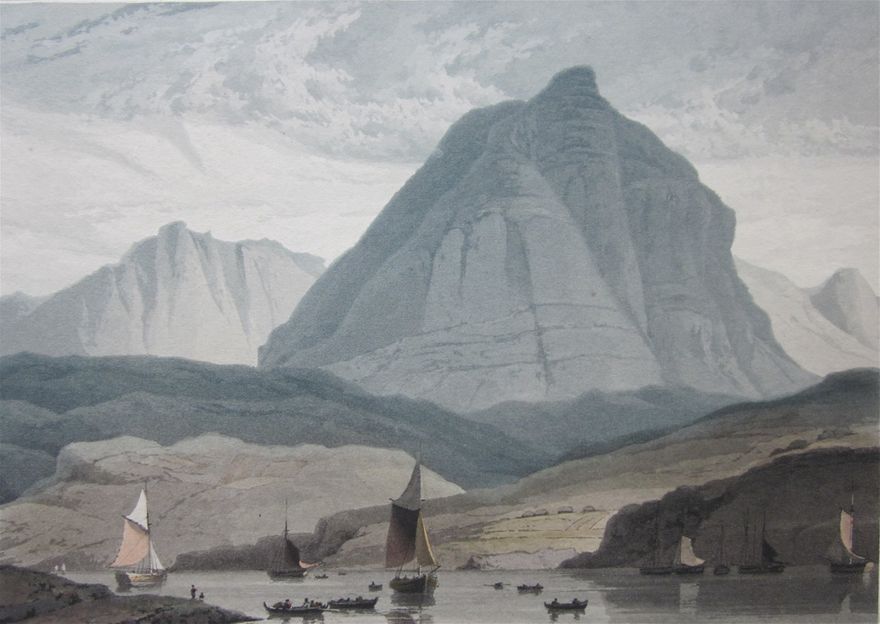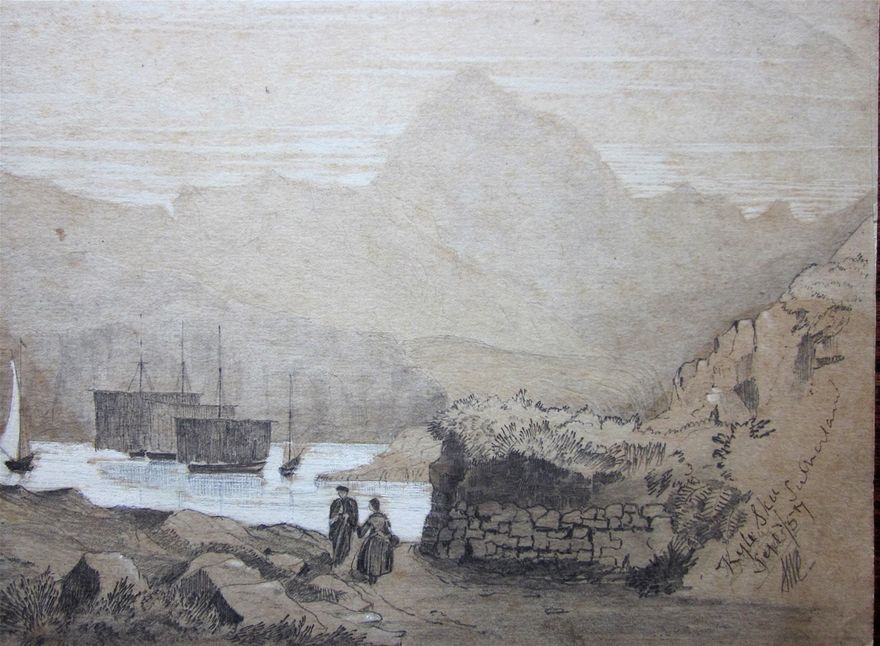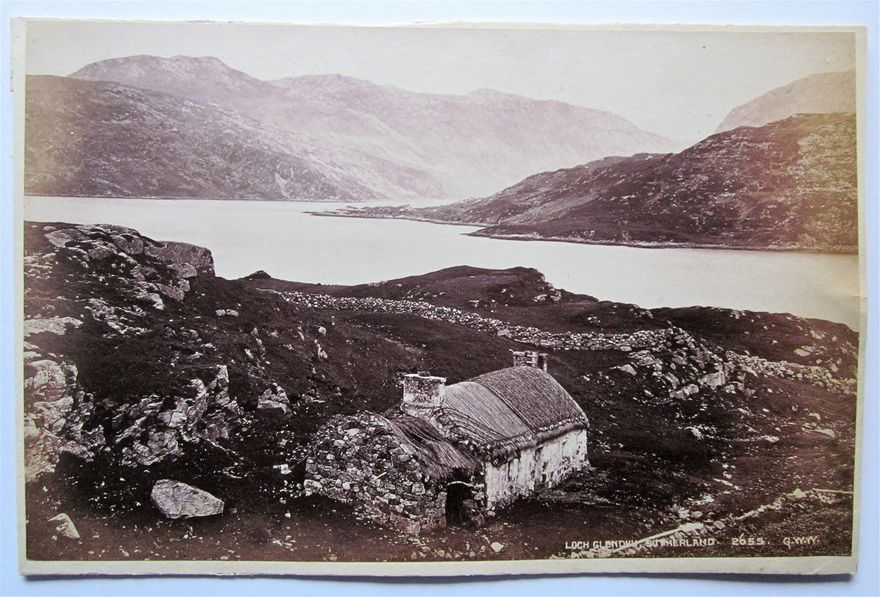William Daniell's image of Quinag, towering over Loch Glencoul at Unapool.
Two visitors to Kylesku
Two images of Kylesku, a small settlement set in magnificent scenery on the north-west coast of Scotland in Sutherland. Until 1984, the small crossing over Caloas Cumhann was made by ferry. It now boasts an impressive bridge. On the right, as you head south, is Loch a' Chairn Bhain, which leads out to the sea. On the left is an expanse of water split into two, the left hand 'finger' leading due east down Loch Glendhu, whilst the 'finger' leading southeast is called Loch Glencoul. It is a key area for geologists, for it is an ideal place to view the Glencoul thrust, powerful lateral earth movements which have brought the ancient gneiss rocks on top of much younger strata. The various rock types running parallel to Loch Glendhu can be made out easily from the road. Overlooking the whole scene is the mountain Quinag, which rises to 808m (2,651ft) at its highest point.
William Daniell visited the area in 1818, well before the complex geology of the area had been understood. In fact, it was a region rarely visited at all by outsiders. He was led there by Mr. Gunn, the factor of the Countess of Sutherland, who had already led Daniell to the foot of the distinctively-shaped Suilven (731m, 2,398ft). Daniell records that "the ride to the head of Loch Assynt, though a distance of only four or five miles, was attended with some fatigue, in consequence of the rough and broken road, which presented every variety of ground that can excite a traveller's antipathy." The journey also involved the road made by a Mr. Jopling (Daniell calls him Topling incorrectly) who had been quarrying marble for a few years. Again, it was "nine miles of very rough uneven ground to the village of Unapool." They were heading for the residence of Mr Clarke, a sheep farmer whose house lay at the far end of Loch Glendhu. Daniell had serious reservations about the visit, especially when he sensed the land closing in as they proceded down the loch, "where the rocks on either side...totally exclude the surface of its waters from the sun during three months in the year..." He began to imagine what sort of person he would find, living in so secluded a place. He pictured them "moping about in hypochondriac fretfulness, or counting, in sad serenity, the silent hours of a vegetative existence." Imagine his surprise, then when he found a "friendly and cordial welcome" from "a man of enterprise and activity", and Mr. Clarke's family full of energy and fun, with "books, music and conversation [to] afford them a variety of amusement." A house, 'Glendhu', can still be found on the site of Mr. Clarke's at the bottom of the loch (see my page "Loch Glendhu Walk").
I also have an original drawing of Kylesku dated September 1854. The artist is unknown - they would also have been a rare visitor to these remote parts. It gives a more accurate impression of Quinag, which in Daniell's print looms more ominously over the area than is the case (Daniell is prone to artistic license in many of his aquatints, as David Addey's re-visiting of Daniell's route makes clear - see his "Voyage Round Great Britain" Spellmount 4 volumes 1995-2002). It also appears to show the crossing at Kylesku itself, where Daniell is placed further southeast along Loch Glencoul. I do not, therefore, believe that the artist simply copied Daniell's print. What a pity that we don't have the account of their visit to this magnificent location.
"Kyle Sku, Sutherland Sept 3/87."
Nowadays, there is no better place in which to sit and admire the view than the Rock Stop Cafe at Unapool, which is run by the North West Highlands Geopark. The displays explain the remarkable geology found in the region, and one can look out onto a landscape that is as powerful as the earth movements that formed it.
A wonderful late-19th century photograph by George Washington Wilson, titled Loch Glendhu, Sutherland. I believe it is looking across Loch Glencoul, probably from Unapool. The important geological strata, including the Glencoul Thrust, can be made out on the distant shore. The Moine thrust runs along the top right-hand end of the distant hills. For more information, see my page on The Highlands Controversy.


